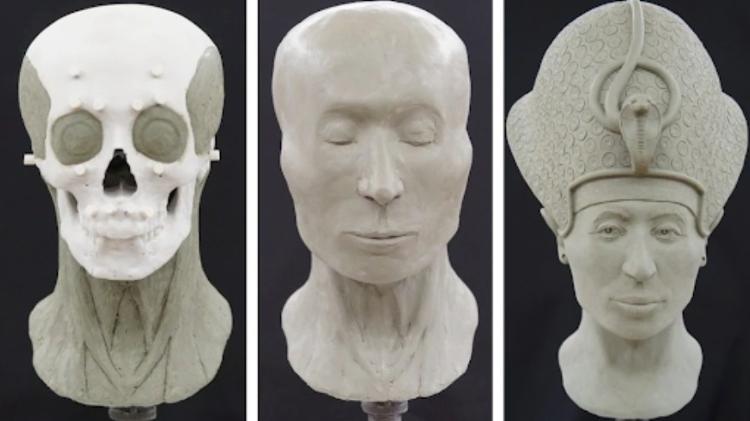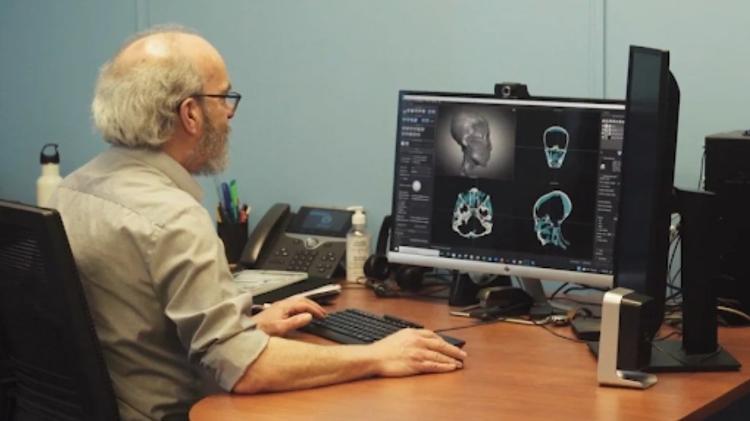A Canadian sculptor has used technology to achieve what many artists have tried to make possible over the centuries. More than 3,300 years later, Christian Corbet “give life” to the pharaoh Tutankhamun, who left his mark on Egyptian history in the New Kingdom.
According to the Mirror newspaper, the artist became known for his sculpture of Prince Philip in 2013. This time she used a 3D model based on Tutankhamun’s skull scans to reconstruct the face of the Egyptian king she.
The final result has been hailed as the most realistic reconstruction of the pharaoh’s appearance ever created.
creation stages
Andrew Nelson of Canada West University contributed by scanning the monarch’s skull to make the innovative project possible. “We worked from the 3D model of the skull and then added the muscle layers and really created the face,” he said.
The team used CT scans to create an accurate model. Also, texture markings indicating the depth of the “flesh” of the face in different places, dating back to modern Egyptians.
“The anatomy of the skull guided the reconstruction of the face, so I think it’s a much more realistic look than anything we’ve seen in the past,” Nelson says.
Previous mummy reconstructions used tissue markers based on white men. To add even more commitment to the project, Corbet decided to use features based on an ordinary Egyptian man.
“Then I built the muscles layer by layer until the forensic reconstruction was complete,” he said.
Thoughtful details
The rebuilt model had eyes closed, no ears, and no expression. However, when it was completed, Corbet was able to “be more creative and open the eyes, directing the angles to the eyes, and maybe adding some lip opening.”
“Again, there was no production of the features – even the ears were carefully thought through by all of us,” he explained. The scientist even added a “war crown” to the result, alluding to statues from the time of Tutankhamun.
a difficult project
Also, according to Mirror, Corbet recounted that the ancient Egyptians used resin-soaked linen on the skulls of pharaohs to protect the face after mummification. As a result, the software had to distinguish between the skull itself and matter.
The difficulties did not end here. The artist recalls that in other cases he got to know the objects of work better. “Duke carved [príncipe Philip]In the many sessions I’ve had with him, I’ve been able to at least interview him; I could talk, talk, watch his facial expressions and his incredible intelligence,” he said.
Despite this limitation, he believes the pharaoh would approve the final piece. “He magically reminded me that he was a pharaoh and gave his approval of the work completed,” he joked. “As an artist, you know when something is right.”
The recreation was produced for a two-part documentary about the pharaoh. Soura Films’ work titled “Tutankhamun: Allies and Enemies” will be screened by North American public broadcaster PBS.
source: Noticias
Mark Jones is a world traveler and journalist for News Rebeat. With a curious mind and a love of adventure, Mark brings a unique perspective to the latest global events and provides in-depth and thought-provoking coverage of the world at large.

